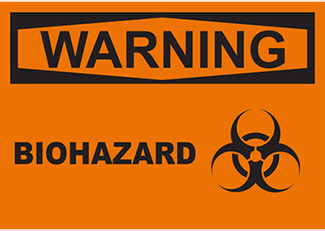A Talk with Oregon OSHA

Aaron Corvin is the Department of Consumer and Business Services Oregon OSHA Public Information Officer, located in Duralabel' home state of Oregon. We sat down with Corvin to chat about Oregon's most cited OSHA standards and their newest informative video on what to expect in an OSHA inspection within the health field.
Oregon is one of 27 states with a plan differing significantly from the federal plan, meaning our economy has different OSHA considerations, such as brewing operations and wine production safety, as covered in a recent winery safety article.
Corvin said, "I think it's really important to understand that, while some of Oregon OSHA's rulemaking activity takes its cues from federal changes, we operate a state program. That means we have the freedom to chart our own course to a large extent."
Most Cited OSHA Standards in Oregon, Health Category
Corvin shared the top five most-cited standards during 2016 Oregon OSHA inspections in the health industry, as follows:
- Written hazard communication program
- Employee information and training
- Material safety data sheets
- Bloodborne pathogens - exposure control requirements
- Rules about safety committees or safety meetings
With bloodborne pathogen violations coming in at #4 on the list of Oregon citations for 2016, it makes sense that Oregon OSHA would prepare a video showing what it's like to be inspected.
The video, part of the Bloodborne pathogens online course, "reflects our push to use online video content effectively, given there's a rising audience for such content. It's really about making it easier for employers and managers to quickly and easily access such content. And video is, indeed, a good medium at accomplishing that."
Corvin explained that online video goes hand in hand with traditional methods of outreach including in-classroom training. "We still offer such classes, but we also recognize the need to serve customers across multiple content platforms, including online video...The need to address the health care working community with the online course reflects, to a not-insignificant degree, both the CDC numbers and the fact that exposure control requirements landed at No. 4 among the top most-cited health standards in 2016."
Oregon OSHA's website contains more info arranged by topic on bloodborne pathogens.
The Importance of Labeling in the Health Field
Coming in at number nine on the Oregon OSHA citation list is "Labels and other forms of warning," which is where Duralabel' wheelhouse is located. Labels are an important part in alerting staff, service workers and patients of the dangers in a health setting. This includes labels on regulated waste containers, showing where contaminated needles are, and their contents, refrigerator/freezer holding blood or other potentially infectious material, containers used for storage, transport, or shipping of blood, contaminated laundry, blood and blood products for clinical use to name but a few of the required applications for biohazard labels.
 In OSHA's words, "The warning label must be fluorescent orange or orange-red or predominantly so, with lettering and symbols in a contrasting colo. Labels shall be affixed as close as feasible to the container by string, wire, adhesive, or other method that prevents their loss or unintentional removal." (1)
In OSHA's words, "The warning label must be fluorescent orange or orange-red or predominantly so, with lettering and symbols in a contrasting colo. Labels shall be affixed as close as feasible to the container by string, wire, adhesive, or other method that prevents their loss or unintentional removal." (1)
According to Corvin, "Needle sticks and other sharps-related injuries happen to 600,000 health care personnel each year, according to the Centers for Disease Control and Prevention."
This fact alone makes it critical to warn people of where bloodborne pathogens lie, with needle sticks causing infectious diseases such as hepatitis B (HBV), hepatitis C (HCV) and acquired immunodeficiency syndrome (AIDS) from HIV.
Top OSHA Violations Across All Industries in Oregon
Beyond the health industry, the top violations for 2016 were:
- Written hazard communication program
- Rules about safety committees or safety meetings
- General fall-protection requirements
Corvin said, "Hazard communication was the number one most cited standard, with 654 violations and initial penalties totaling $42,315. The standard requires employers to develop, implement, and maintain a written hazard communication program. That program must include a list of hazardous chemicals, container labels, safety data sheets, and employee information and training."
Corvin also pointed out that #3 on the list is general fall-protection requirements, with 318 violations and initial penalties totaling $631,220. Falls are the leading cause of death in construction. Oregon OSHA has several rules for construction activities that spell out the minimum height at which workers must be protected from falling. For example, the trigger height for general fall protection in construction is six feet. That means construction contractors must use some form of fall protection to prevent their employees from falling six feet or more to a lower level.
On a more serious level, 61 people died on the job in Oregon during 2016. Nearly half (29) of these workplace deaths in 2016 were due to motor vehicle accidents. Oregon OSHA's Health and Safety Resource newsletter covers this topic, available for download as a PDF.
OSHA Citations
According to Corvin, the time it takes to wrap up an inspection can vary, and OSHA has up to six months to complete inspections, although they are typically finished sooner.
Oregon OSHA classifies violations as "serious" and "other than serious." Those classifications are based on severity - could the violation result in serious physical harm, such as an amputation or death - and probability, which includes an assessment of how many workers are exposed and the frequency of the exposure.
Repeat, failure to correct, and willful violations carry higher penalties. Factors that go into penalty adjustments are employer size, history, good faith, and immediate correction of a violation.
Oregon OSHA's technical staff can answer questions to help employers understand how to apply rules to their workplace by calling 800.922.2689 or by emailing tech.web@oregon.gov.
or by emailing tech.web@oregon.gov.
Employers may also contact Oregon OSHA's no-cost consultation services for help with safety and health programs by contacting their closest OSHA office location, or by emailing consult.web@oregon.gov
1) Bloodborne Pathogens: Questions and Answers about Occupational Exposure, produced by Oregon OSHA, a Division of the Department of the Consumer and Business Services.
Related Resources

5 Ways to Avert Common Bio Waste Violations
There are clear guidelines that health care and lab workers must follow when handling biohazardous waste. ...
Read
Guidelines for OSHA Fall Protection Standards and Compliance
Ineffective or missing fall protection has been the Occupational Safety and Health Administration's (OSHA) ...
Read
2023 Top OSHA Violations
Top 10: OSHA Violations for 2023: Stay Compliant & Safe In the realm of occupational safety, staying ...
Read.png)




